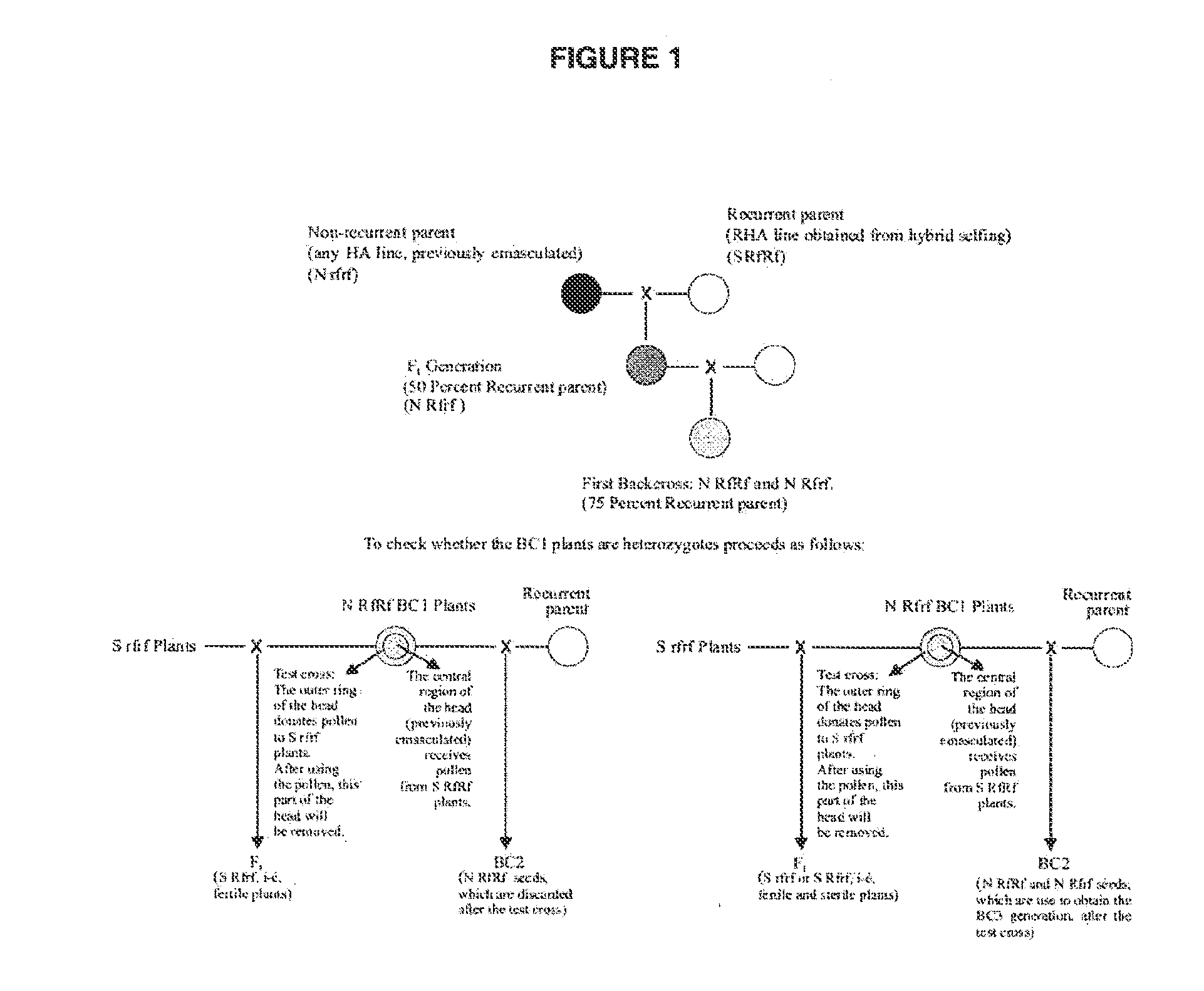Method of obtaining female inbred lines from asteracea hybrids
a technology of asteracea and hybrids, applied in the field of plant improvement, can solve problems such as limited self-fencing
- Summary
- Abstract
- Description
- Claims
- Application Information
AI Technical Summary
Problems solved by technology
Method used
Image
Examples
example
[0037]CMS-HA ones were derived from 10 inbred RHA lines obtained through self fertilization and selection of plants of several commercial hybrids form Brazil, without recording their origins. Only the genotypes expressing monogenic fertility restoration for the CMS PET1 were used. For the CMS-HA developing process, the RHA lines were initially altered into HA inbreds, through three backcrosses (number sufficient to reach an expected percentage of the recurrent parent above 90%) to the HA 300 line (public USDA-ARS inbred line), used as a non recurrent parent. The RfRf and Rfrf plants obtained from the third backcross generation were, then, selfed and identified through test crosses to the CMS-HA 300 inbred line. This CMS-HA inbred line was also used in order to screen HA (N rfrf) plants from RHA (N RfRf and N Rfrf) plants, from the progeny from Rfrf selfed plants. Following, HA inbred lines were altered into CMS-HA, by the means of three backcrosses to the line CMS-HA 300 used as non...
PUM
 Login to View More
Login to View More Abstract
Description
Claims
Application Information
 Login to View More
Login to View More - R&D
- Intellectual Property
- Life Sciences
- Materials
- Tech Scout
- Unparalleled Data Quality
- Higher Quality Content
- 60% Fewer Hallucinations
Browse by: Latest US Patents, China's latest patents, Technical Efficacy Thesaurus, Application Domain, Technology Topic, Popular Technical Reports.
© 2025 PatSnap. All rights reserved.Legal|Privacy policy|Modern Slavery Act Transparency Statement|Sitemap|About US| Contact US: help@patsnap.com

